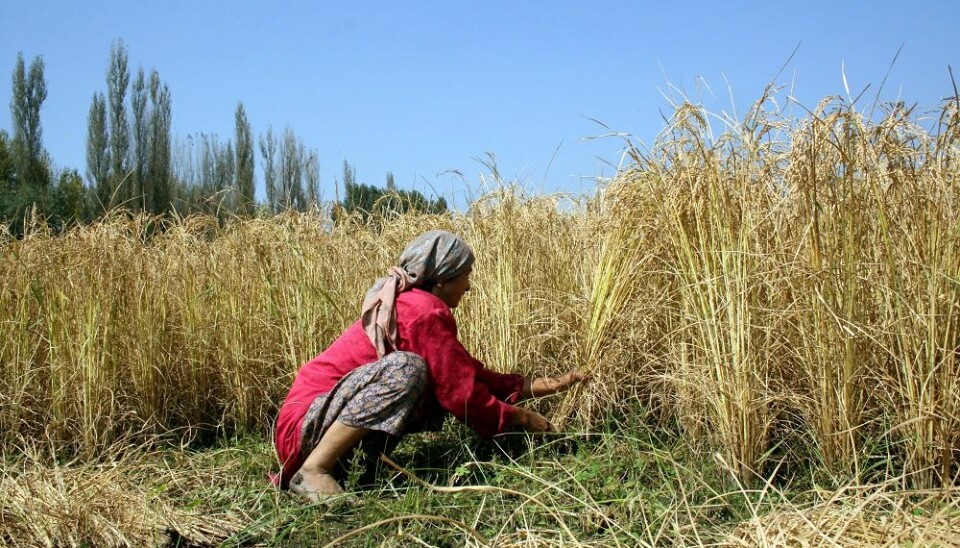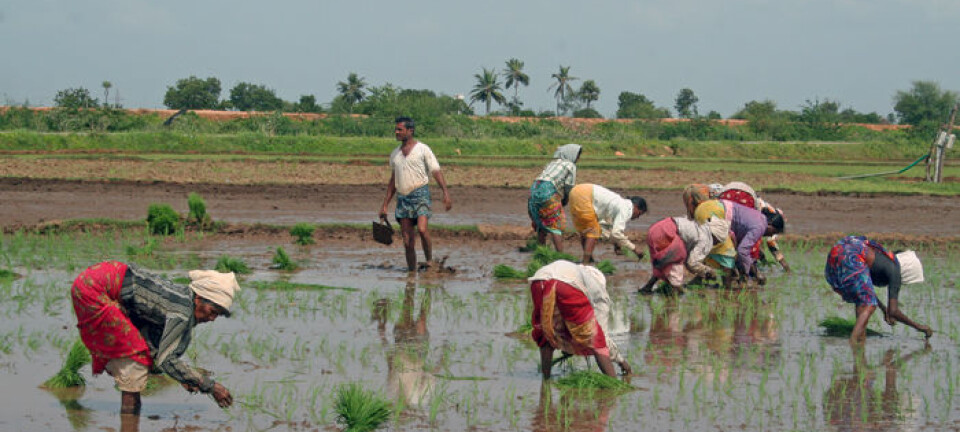An article from University of Oslo

India: An Economic Giant, but a Hungry Nation
India has been the poster child of freedom and democracy for over six decades, but why is it not able to adequately feed its poor?
India is now firmly established as one of the major economies in the world with a burgeoning middle class. The country has achieved impressive economic growth rate over the past couple of decades. In the past year alone, the Indian economy grew by 7.9% in the first quarter — one of the fastest growth rates among the big economies of the world.
India’s other development achievements include a doubling of life expectancy at birth, a drastic reduction in child mortality rates, major success in controlling the spread of HIV/AIDs, and the complete eradication of polio. In addition to being the poster child of freedom and democracy for over six decades, India has also managed to reduce, if not entirely eliminate, the threat of famine.
Despite all its achievements, however, India is also home to the largest number of people suffering from hunger in the world. Improvements in nutritional status have not kept pace with the country’s impressive success in spurring economic growth in the past few decades.
With 15.2 % of the population categorised as undernourished — and a prevalence of stunting in children under 5 years at 38.8 % — a recent FAO report noted, ‘Higher economic growth has not been fully translated into higher food consumption, let alone better diehts overall, suggesting that the poor and hungry may have failed to benefit much from overall growth’
Why is India unable to better combat chronic undernutrition?

Dan Banik, Professor at the University of Oslo, has studied food security in India over several decades, and is worried over the country's inability to address chronic hunger despite gains from economic growth.
"India should deservedly be proud of all its achievements. Despite a huge population and many other challenges, it has achieved numerous successes. However, the major blot on India's development record relates to the astonishingly large number of people who suffer from undernutrition."
"And although several major public policy initiatives have been initiated to address undernutrition, they have failed to have the desired impacts," says Banik.
India has certainly tried
The main explanatory factors behind hunger affecting large groups in the population are inadequate food intake, infections and poor caring practices, like poor infant feeding practices. Particularly alarming is the fact that the number of underweight children has not declined significantly since the early 1990s, despite the Indian economy growing at an average annual rate of over 6 %
Over the years, successive Indian governments at central and regional levels have intervened in private food markets in order to control and stabilise prices and supplies, and to prevent food shortages.
They have also implemented several social protection programmes aimed at improving the nutritional status of the population. But many of these programmes have been plagued by challenges like identifying and reaching targeted groups, corruption, weak purchasing power and inadequate storage facilities among other things.
However, Professor Banik believes that the problem isn't always about money:
"Evidence from fieldwork in many of India's poorest districts shows that it is not always a matter of inadequate resources. Rather, it is, in my view, primarily an implementation problem," says Banik.
An illustrative example
The researcher points out a subsidy programme as an illustrative example of the challenges the government's measures are met with. The subsidy programme aims to improve food security among poor households by subsidising rations of rice, sugar, kerosene oil, and other commodities that are distributed through ration shops, or fair price shops.
However, a large number of households cannot afford to purchase their allocated quota of subsidised products in one transaction, and given the considerable distance to the nearest shop, it is not always practical to make several trips to the store to pick up small quantities of rationed goods.
Further, many districts in the country do not have the capacity to adequately store agricultural products for long periods, which negatively affects the quality and durability of foodgrains that are procured, stored and transported from other parts of the country.
"India has designed some of the most innovative social protection programmes in the world, and although timely availability of resources in the districts remains an issue, identifying vulnerable groups and thereafter addressing the root causes of their continued hunger must be urgently prioritised."
"The political and administrative authorities are extremely adept at preventing major crises such as famines, but often overlook undernutrition as they do not consider it to be warrant the same type of attention and response," Banik points out.
Reference:
Banik, D. The Hungry Nation: Food Policy and Food Politics in India, forthcoming in Food Ethics (2016)


































